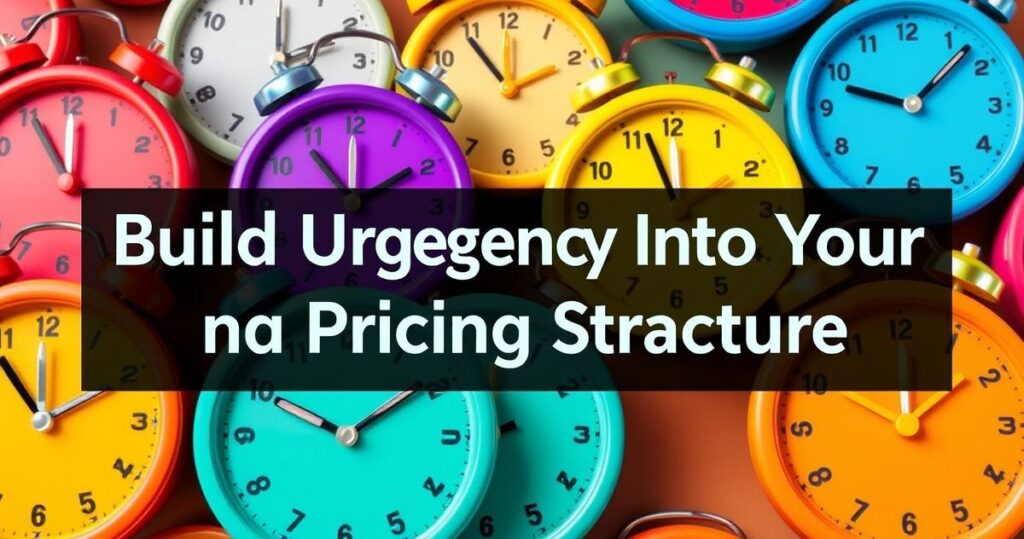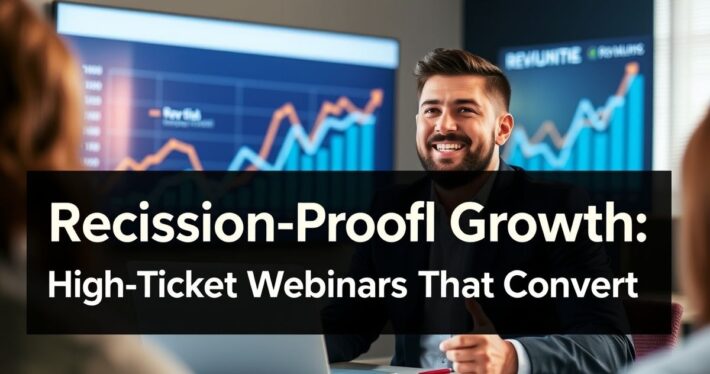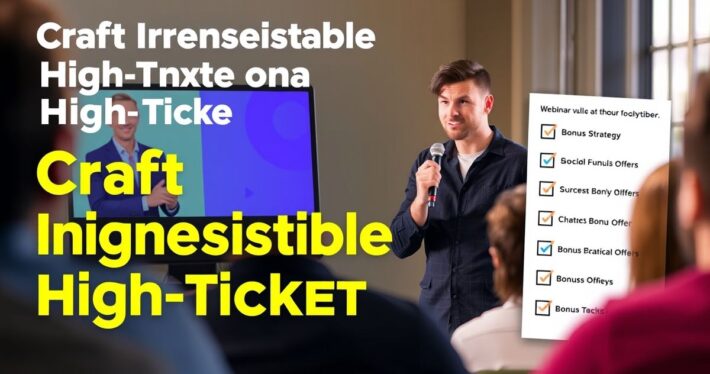Building urgency into your pricing structure for better results.

Building Urgency Into Your Pricing Structure for Better Results
If you’ve ever felt the rush of clicking “buy now” before a timer hit zero, you’ve experienced the power of urgency in pricing. It’s a psychological trigger that taps into our fear of missing out (FOMO) and pushes us to act quickly. But urgency isn’t just about slapping a countdown timer on your sales page. Done right, it’s a strategic tool that can significantly boost your conversion rates and improve your bottom line.
So, how can you build urgency into your pricing structure in a way that feels authentic, ethical, and effective? Let’s break it down.
Why Urgency Works (and When It Doesn’t)
Urgency works because it plays on one of the most basic human instincts: the desire to avoid loss. Whether it’s missing out on a limited-time offer or losing access to a valuable bonus, the fear of losing something often outweighs the fear of making a bad decision.
However, urgency can backfire if it feels forced or manipulative. Customers are savvy—they can smell inauthenticity from a mile away. If your urgency tactics come across as gimmicky, you risk losing trust and credibility. The key is to create urgency that feels natural and aligns with your audience’s needs.
4 Proven Strategies to Build Urgency Into Your Pricing Structure
1. Limited-Time Discounts
One of the easiest ways to create urgency is by offering a time-sensitive discount. For example, “Get 20% off if you purchase before midnight tonight” immediately creates a sense of urgency by placing a clear deadline on the offer.
Pro Tip: Use precise deadlines rather than vague terms like “soon” or “later.” A countdown timer can also be a powerful visual cue.
2. Scarcity Tactics
Scarcity works hand-in-hand with urgency. When customers perceive that a product or service is in limited supply, they’re more likely to act quickly. You can highlight scarcity by:
- Limiting the number of spots available (e.g., “Only 10 seats left!”)
- Offering exclusive bonuses for the first X buyers
- Using phrases like “while supplies last” or “limited stock”
Real-World Example: Online courses often use scarcity by capping enrollment. For instance, a webinar might say, “Registration closes once we hit 500 attendees.” This creates urgency while also fostering a sense of exclusivity.
3. Tiered Pricing with Expiring Bonuses
Tiered pricing is a great way to add urgency while increasing perceived value. Here’s how it works:
- Offer multiple pricing tiers (e.g., Basic, Premium, VIP)
- Include time-sensitive bonuses for higher tiers (e.g., “Get an extra 1:1 coaching session if you upgrade to VIP within 48 hours.”)
This strategy not only creates urgency but also encourages customers to choose higher-priced options.
4. Early Bird Pricing
Early bird pricing is a classic urgency tactic that rewards quick decision-makers. For example, you could offer a discounted rate for the first 100 customers or provide exclusive bonuses for early adopters.
Word of Caution: Make sure your early bird pricing is balanced. If the discount is too steep, it might devalue your product in the eyes of later buyers.
How to Use Urgency Ethically
Urgency is a powerful tool, but it’s important to use it responsibly. Here’s how to ensure your tactics are ethical and effective:
- Be Transparent: Clearly communicate the terms of your offer. Don’t mislead customers with false deadlines or artificial scarcity.
- Deliver on Promises: If you offer bonuses or discounts, make sure they’re valuable and delivered as promised.
- Align with Customer Needs: Urgency works best when it solves a real problem. Ask yourself, “Does this offer genuinely benefit my audience?”
A Case Study: How Urgency Transformed a Webinar Launch
Let me share a real-world example from my own experience. I was helping a client launch a webinar series aimed at small business owners. Initially, their registration numbers were underwhelming. We decided to implement urgency tactics to boost conversions.
Here’s what we did:
- Early Bird Pricing: We offered a 25% discount for the first 50 registrants.
- Limited Seats: We set a hard cap of 200 attendees to create scarcity.
- Expiring Bonuses: We included a free downloadable guide for anyone who registered within the first week.
The result? Registration tripled within three days, and the webinar sold out a week before the event. The attendees were thrilled, and the client saw a significant increase in leads and sales.
Common Pitfalls to Avoid
While urgency can be highly effective, it’s not without its challenges. Here are some common mistakes to avoid:
- Overusing Urgency: If every offer is “limited time,” customers will start to tune out. Use urgency sparingly to maintain its impact.
- Ignoring Context: Urgency should align with your audience’s buying cycle. For example, launching a holiday sale in July might feel out of place.
- Failing to Test: What works for one audience might not work for another. Always A/B test your urgency tactics to find the right balance.
Final Thoughts: Actionable Steps to Get Started
Ready to build urgency into your pricing structure? Here’s a quick action plan:
- Audit Your Current Offers: Look for opportunities to add urgency without overwhelming your audience.
- Experiment with Tactics: Try a mix of limited-time discounts, scarcity, and bonuses to see what resonates.
- Track and Optimize: Use analytics to measure the impact of your urgency tactics and refine your approach.
And remember, urgency isn’t just about making a sale—it’s about creating value for your customers. When done right, it’s a win-win for both you and your audience.
Now, here’s a question to ponder: How can you align urgency with your brand’s unique value proposition? Food for thought!



